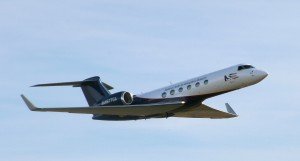American scientists have completed years of research flights from the Arctic to the Antarctic — via Christchurch — to produce a detailed portrait of greenhouse gases and particles in the atmosphere. The project, known as HIPPO, is generating the first detailed mapping of the global distribution of gases and particles that affect Earth’s climate.
 “Tracking carbon dioxide (CO2) and other gases with only surface measurements has been like snorkeling with a really foggy mask,” says Britton Stephens, a scientist with the National Center for Atmospheric Research (NCAR) and one of the project’s principal investigators. “Finally, HIPPO is giving us a clear view of what’s really out there.”
“Tracking carbon dioxide (CO2) and other gases with only surface measurements has been like snorkeling with a really foggy mask,” says Britton Stephens, a scientist with the National Center for Atmospheric Research (NCAR) and one of the project’s principal investigators. “Finally, HIPPO is giving us a clear view of what’s really out there.”
The project’s name was an acronym for HIAPER Pole-to-Pole Observations, after the specially-equipped Gulfstream V jets was dubbed a “high-performance instrumented airborne platform for environmental research”.
The fifth-and-final month-long series of a dozen HIAPER flights around the world took place last month. In sampling greenhouse gases and black carbon in the troposphere from pole-to-pole in all four seasons for both hemispheres, the jet has repeatedly flown from Rarotonga to Christchurch and then well into the Antarctic before returning to New Zealand. Its New Zealand flights have included taking samples from as low as 300m over Lauder in Central Otago, and as high as 14km in the lower stratosphere. The researchers repeatedly measured a total of over 80 gases and particles in the atmosphere.
These seasonal snapshots of concentrations of greenhouse gases are helping to answer such questions as why atmospheric levels of methane, a potent greenhouse gas, have tripled since the Industrial Age and are on the rise again after leveling off in the 1990s. One of HIPPO’s most significant accomplishments has been quantifying the seasonal amounts of CO2 taken up and released by land plants and the oceans. Those measurements will help scientists produce more accurate estimates of the annual cycle of carbon dioxide in and out of the atmosphere and how the increasing amount of this gas is influenced by both the natural world and society.
In the Arctic they saw pooling of industrial emissions and respiration from land plants, while in the tropics there was evidence of wildfires in forests, and at Lauder, the plane recorded a profile of greenhouse gases from the stratosphere downwards while NIWA scientists at Lauder measured the concentration of those gases at the Earth’s surface and upwards through the “total column” overhead, helping to put New Zealand’s own measurements in a global context.
The scientists said that on each HIPPO flight they frequently saw higher levels of the powerful greenhouse gas N2O at higher altitudes than at the surface, where primary N2O emissions come from soils and the ocean and a large human-generated component originates as a result of fertiliser use for agriculture. These anthropogenic emissions are a relatively new source, and the HIPPO investigators, they often found elevated concentrations of N2O high in the atmosphere – even over areas where ground-based monitors did not indicate presence of the gas at the surface. Some may be carried up from increased emissions in the tropics and the scientists have predicted that increased use of fertilisers may boost N2O emissions.
Dr Stephens, an expert in the projects CO2 and O2 measurements, told the SMC:
“We see detailed patterns in all gases and aerosols that reflect complex influences of various sources and mixing processes. Over the Southern Ocean we see O2 coming out and CO2 going in during summer, and the opposite in winter.
“It’s a bit early in the analysis phase to draw firm conclusions, but the flights are likely to help build a better picture of processes such as atmospheric mixing.
“The air is much ‘cleaner’ in the Southern Hemisphere, but we can see the Northern hemisphere-dominated pollutants spreading south.
“We flew about 20 ‘profiles’ over New Zealand in three years and during summer saw strong uptake signals in CO2.”
Asked about the types of greenhouse gases given off by intensive livestock farming, such as dairying, another scientist on the flights, Harvard postdoctoral fellow Eric Kort told SMC:
“We haven’t specifically analysed the data collected over New Zealand to attempt local emissions quantification of (N2O and methane). Qualitatively, I can say on some of the profiles over Lauder/Christchurch we see atmospheric gradients consistent with emissions of methane and nitrous oxide.
“The magnitude of the signals is not notably large- we have seen much larger over the agricultural lands of California, but the spatial-temporal coverage over NZ is very sparse so I wouldn’t draw any real conclusions from that. Basically, we can see some emissions of methane and nitrous oxide are occurring (which one would expect), but we can’t at this point really comment on whether they are larger or smaller than expected”.